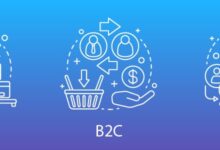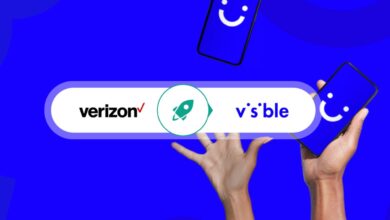B2B2C Explained: 7 Powerful Insights You Can’t Ignore
Ever heard of B2B2C but not quite sure what it means? You’re not alone. This hybrid business model is quietly reshaping how companies connect with customers—through other businesses. Let’s break it down in plain English.
What Exactly Is B2B2C?

The term b2b2c, short for Business-to-Business-to-Consumer, describes a model where one business sells its products or services to another business, which then delivers them to the end consumer. It’s a bridge between B2B and B2C, combining the strengths of both.
The Core Concept Behind B2B2C
At its heart, b2b2c is about collaboration. Instead of going directly to consumers (B2C) or only serving other businesses (B2B), a company enables another business to serve the final customer—while still maintaining a presence in the experience.
- A manufacturer sells smart home devices to a telecom provider.
- The telecom bundles the device with its internet service and markets it to households.
- The consumer buys from the telecom, but the manufacturer still influences branding and support.
This creates a win-win-win: the manufacturer gains scale, the intermediary adds value, and the customer gets a seamless solution.
How B2B2C Differs From B2B and B2C
Understanding the differences is key. In traditional B2B, transactions are between businesses—like a software company selling CRM tools to enterprises. In B2C, companies sell directly to individuals—like Amazon or Netflix.
But b2b2c blends both. The first ‘B’ (supplier) doesn’t interact directly with the end user but still plays a role in their experience. Think of it as a supply chain with shared customer ownership.
“B2B2C isn’t just a sales model—it’s a strategic partnership where customer experience is co-owned.” — Harvard Business Review
Why B2B2C Is Gaining Massive Traction
The digital age has made b2b2c not just possible—but profitable. Companies are realizing they can scale faster by leveraging existing customer relationships of partners.
Digital Transformation Fuels B2B2C Growth
With cloud platforms, APIs, and data-sharing tools, integrating systems between businesses has never been easier. A fintech company can embed its payment solution into a retail bank’s app, reaching millions of users without building its own consumer brand.
According to a McKinsey report, companies adopting b2b2c models see up to 30% faster customer acquisition and 25% higher lifetime value.
Consumer Demand for Integrated Experiences
Today’s consumers don’t want to juggle multiple brands for a single solution. They want simplicity. B2B2C delivers that by bundling services.
- Apple partners with banks to offer Apple Card through its ecosystem.
- Google collaborates with phone carriers to pre-install services and offer joint support.
- Insurance providers team up with car manufacturers to offer embedded auto coverage.
These are all b2b2c plays that make life easier for the end user.
Real-World Examples of B2B2C in Action
Theory is great, but let’s look at how real companies are winning with b2b2c.
Amazon Web Services (AWS) and SaaS Startups
AWS doesn’t sell directly to end consumers. Instead, it powers thousands of SaaS companies—like Canva, Slack, and Zoom—who then serve millions of users. AWS benefits from scale, while the SaaS firms focus on UX and marketing.
This is a classic b2b2c model: AWS is the backend enabler, the SaaS company is the front-end face, and the user gets a polished product.
Microsoft and Enterprise Software Resellers
Microsoft sells licenses to IT resellers and system integrators. These partners bundle Microsoft 365 with consulting, training, and support, then sell the package to small and mid-sized businesses.
The reseller owns the customer relationship, but Microsoft remains visible through branding, updates, and technical authority. This extends Microsoft’s reach without expanding its direct sales force.
Stripe and E-commerce Platforms
Stripe provides payment infrastructure to platforms like Shopify, WooCommerce, and BigCommerce. These platforms integrate Stripe so their merchants can accept payments seamlessly.
While the merchant thinks they’re using Shopify Payments, the backend is powered by Stripe. The consumer checks out without ever knowing Stripe exists—yet Stripe plays a critical role in the transaction. That’s b2b2c at its most invisible—and effective.
Key Advantages of the B2B2C Model
Why are so many companies shifting toward b2b2c? The benefits are compelling.
Accelerated Market Penetration
Instead of building a customer base from scratch, b2b2c lets you piggyback on an established partner’s audience. A health tech company can partner with a national pharmacy chain to distribute its telehealth app—immediately accessing millions of potential users.
This drastically reduces customer acquisition cost (CAC) and time-to-market.
Enhanced Customer Trust Through Association
Consumers trust brands they already know. By aligning with a reputable intermediary, a lesser-known supplier gains instant credibility.
- A new cybersecurity firm partners with a well-known bank to offer fraud protection.
- A sustainable packaging startup works with a major grocery retailer to launch eco-friendly containers.
The end user is more likely to adopt the product because it comes through a trusted channel.
Shared Responsibility and Risk Mitigation
In b2b2c, risks are distributed. The supplier focuses on product quality and innovation, while the intermediary handles sales, support, and logistics.
If a product issue arises, both parties collaborate on resolution—reducing the burden on any single entity. This shared accountability fosters long-term partnerships.
Challenges and Pitfalls of B2B2C
Despite its advantages, b2b2c isn’t a magic bullet. It comes with unique challenges.
Losing Direct Customer Connection
One of the biggest risks in b2b2c is the lack of direct access to end users. If the intermediary controls the relationship, the supplier may struggle to gather feedback, build loyalty, or upsell.
For example, if a software vendor only reaches customers through a reseller, it might miss critical usage data or fail to spot churn signals early.
Brand Dilution and Identity Confusion
When your product is embedded in another company’s offering, your brand can become invisible. Consumers may not know who’s really behind the solution.
To combat this, successful b2b2c players use co-branding strategies. For instance, Intel’s “Intel Inside” campaign made its brand visible even when selling through PC manufacturers like Dell or HP.
Complex Partnership Management
B2B2C relies on strong partnerships. But aligning goals, incentives, and customer service standards across organizations is tough.
- Different sales cycles and KPIs can create friction.
- Data sharing may be limited due to privacy or competitive concerns.
- Conflict can arise over pricing, margins, or customer ownership.
Clear contracts, shared dashboards, and regular alignment meetings are essential to keep partnerships healthy.
How to Build a Successful B2B2C Strategy
Want to implement b2b2c effectively? Here’s a step-by-step guide.
Identify the Right Partner Ecosystem
Not all businesses make good b2b2c partners. Look for companies that:
- Have access to your target audience.
- Complement your product without competing.
- Share your values around customer experience.
- Have the infrastructure to support integration.
For example, a fitness app might partner with health insurance providers who reward users for activity—aligning incentives and expanding reach.
Design for Seamless Integration
Technical and experiential integration is crucial. Your product should feel like a natural part of the partner’s offering.
Use APIs, SDKs, and white-label solutions to embed your service smoothly. Ensure branding, onboarding, and support are consistent across touchpoints.
Tools like Twilio excel at this—its communication APIs are deeply embedded in apps like Uber and Airbnb, yet function invisibly to the user.
Create Shared Value and Incentives
Partnerships fail when one side benefits more than the other. Design a model where both parties win.
- Offer revenue sharing or performance bonuses.
- Provide marketing support or co-branded campaigns.
- Share customer insights (with consent) to improve joint offerings.
The goal is alignment—not just transaction.
The Future of B2B2C: Trends to Watch
B2B2C isn’t just a trend—it’s evolving into the backbone of modern commerce.
Rise of Embedded Finance and Insurance
One of the fastest-growing b2b2c areas is embedded finance. Companies like Plaid and Brex enable non-financial brands to offer banking, lending, and insurance services.
For example, a ride-sharing app can offer drivers instant loans or fuel cards—powered by a fintech partner. The driver gets convenience; the app increases loyalty; the fintech scales.
AI-Powered Personalization Across Partners
As AI improves, b2b2c networks will deliver hyper-personalized experiences. A travel platform could use AI to recommend hotels, flights, and insurance—all powered by different backend providers but presented as one seamless journey.
The consumer sees a single interface; behind the scenes, multiple b2b2c relationships make it possible.
Decentralized Ecosystems and Web3
Web3 introduces new b2b2c possibilities through decentralized autonomous organizations (DAOs) and smart contracts. Imagine a supply chain where manufacturers, logistics firms, and retailers automatically share revenue with each other—and even with end users—based on usage.
While still early, blockchain could make b2b2c partnerships more transparent, automated, and equitable.
B2B2C vs. Other Business Models: A Comparative Analysis
To truly understand b2b2c, let’s compare it to alternatives.
B2B2C vs. Pure B2B
Pure B2B focuses on selling products or services to other businesses with no concern for the end consumer. Think industrial equipment or enterprise software.
In contrast, b2b2c requires the supplier to care about the final user experience—even if indirectly. The success of the intermediary’s offering depends on how well the supplier’s component performs.
B2B2C vs. Pure B2C
B2C companies own the entire customer journey—from marketing to support. They invest heavily in branding and direct engagement.
B2B2C suppliers, however, must influence without controlling. They rely on partners to deliver the front-end experience, so their power lies in product quality, reliability, and behind-the-scenes support.
B2B2C vs. Marketplace Models
Marketplaces like Amazon or Etsy connect multiple sellers with buyers. They’re consumer-facing but host third-party vendors.
B2B2C is different: it’s usually a 1-to-1 or 1-to-few partnership where the supplier’s product is integrated into the partner’s offering—not listed alongside competitors.
For example, Salesforce integrates with ZoomInfo for data enrichment—this is b2b2c, not a marketplace.
Measuring Success in B2B2C Partnerships
How do you know if your b2b2c strategy is working? Track the right metrics.
Partner Performance Metrics
Monitor how well your partners are performing:
- Number of end customers reached
- Conversion rates from trial to paid
- Partner sales growth month-over-month
- Support ticket resolution times
These help you assess the health of the partnership and identify areas for support.
Customer Experience Indicators
Even if you don’t own the customer relationship, you can still measure satisfaction:
- Net Promoter Score (NPS) for the overall product
- Product usage frequency and depth
- Churn rate among end users
- Customer feedback mentioning your brand
Work with partners to share anonymized data that helps improve the offering.
Revenue and Profitability KPIs
Ultimately, b2b2c must be profitable. Track:
- Revenue generated through each partner
- Cost of integration and support per partner
- Customer lifetime value (LTV) via b2b2c channels
- Return on partnership investment (ROPI)
These metrics help you decide which partnerships to scale, optimize, or exit.
What is the main advantage of the B2B2C model?
The main advantage of the B2B2C model is accelerated market reach with reduced customer acquisition costs. By leveraging an established business partner’s customer base, companies can scale quickly while sharing responsibilities and risks.
How does B2B2C differ from traditional B2B?
Unlike traditional B2B, where the focus is solely on serving other businesses, B2B2C involves indirect engagement with end consumers. The supplier cares about the final user experience and often collaborates on branding, support, and product integration.
Can a company use both B2B and B2B2C models?
Yes, many companies operate hybrid models. For example, a software firm might sell directly to enterprises (B2B) while also partnering with resellers who bundle its product for SMEs (B2B2C). This diversifies revenue and expands market coverage.
What industries benefit most from B2B2C?
Industries with high customer touchpoints and integration potential benefit most—such as fintech, healthcare, e-commerce, SaaS, telecommunications, and automotive. Any sector where value is delivered through ecosystems can leverage B2B2C.
How do you maintain brand visibility in a B2B2C model?
Use co-branding strategies, ensure your logo and messaging appear in the customer journey, provide educational content, and support partners with marketing assets. Campaigns like Intel’s “Intel Inside” show how brand visibility can be maintained even in indirect sales.
The b2b2c model is redefining how value flows in the digital economy. It’s not just about selling to businesses or consumers—it’s about enabling businesses to better serve consumers. By fostering collaboration, leveraging existing networks, and focusing on shared success, b2b2c offers a powerful path to growth, innovation, and customer satisfaction. As technology evolves and ecosystems deepen, b2b2c will become not just an option—but a necessity for competitive advantage.
Further Reading:








